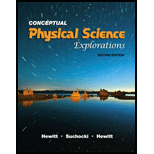
Concept explainers
What is the difference between reverse faults and normal faults?
The difference between reverse faults and normal faults.
Answer to Problem 15RQ
The main difference between reverse fault and normal faults is that the normal fault is a type of dip-slip fault where one side of land moves downward while the other side stays still. In contrast, a reverse fault is a type of dip-slip where one side of the land moves upward while the other side stays still.
Explanation of Solution
The difference between reverse faults and normal faults are:
| S.No. | Normal faults | Reverse faults |
|---|---|---|
| 1 | The formation of the normal faults takes place when one side of the land moves in the downward direction with respect to the foot land. | The formation of reverse fault takes place when one side of the land moves in the upward direction with respect to the other side of the land. |
| 2 | Normal faults formed due to tensional stress. | Reverse faults formed due to the compressive stress. |
| 3 | In normal faults, the hanging wall is pulled apart from the footwall. | In reverse faults, the hanging wall is pushed towards the footwall. |
Conclusion:
Therefore, the main difference between reverse fault and normal faults is that the normal fault is a type of dip-slip fault where one side of land moves downward while the other side stays still. In contrast, a reverse fault is a type of dip-slip where one side of the land moves upward while the other side stays still.
Chapter 26 Solutions
Conceptual Physical Science Explorations
Additional Science Textbook Solutions
Physics for Scientists and Engineers with Modern Physics
Modern Physics
Conceptual Integrated Science
Cosmic Perspective Fundamentals
Physics for Scientists and Engineers: A Strategic Approach, Vol. 1 (Chs 1-21) (4th Edition)
The Cosmic Perspective (8th Edition)
 College PhysicsPhysicsISBN:9781305952300Author:Raymond A. Serway, Chris VuillePublisher:Cengage Learning
College PhysicsPhysicsISBN:9781305952300Author:Raymond A. Serway, Chris VuillePublisher:Cengage Learning University Physics (14th Edition)PhysicsISBN:9780133969290Author:Hugh D. Young, Roger A. FreedmanPublisher:PEARSON
University Physics (14th Edition)PhysicsISBN:9780133969290Author:Hugh D. Young, Roger A. FreedmanPublisher:PEARSON Introduction To Quantum MechanicsPhysicsISBN:9781107189638Author:Griffiths, David J., Schroeter, Darrell F.Publisher:Cambridge University Press
Introduction To Quantum MechanicsPhysicsISBN:9781107189638Author:Griffiths, David J., Schroeter, Darrell F.Publisher:Cambridge University Press Physics for Scientists and EngineersPhysicsISBN:9781337553278Author:Raymond A. Serway, John W. JewettPublisher:Cengage Learning
Physics for Scientists and EngineersPhysicsISBN:9781337553278Author:Raymond A. Serway, John W. JewettPublisher:Cengage Learning Lecture- Tutorials for Introductory AstronomyPhysicsISBN:9780321820464Author:Edward E. Prather, Tim P. Slater, Jeff P. Adams, Gina BrissendenPublisher:Addison-Wesley
Lecture- Tutorials for Introductory AstronomyPhysicsISBN:9780321820464Author:Edward E. Prather, Tim P. Slater, Jeff P. Adams, Gina BrissendenPublisher:Addison-Wesley College Physics: A Strategic Approach (4th Editio...PhysicsISBN:9780134609034Author:Randall D. Knight (Professor Emeritus), Brian Jones, Stuart FieldPublisher:PEARSON
College Physics: A Strategic Approach (4th Editio...PhysicsISBN:9780134609034Author:Randall D. Knight (Professor Emeritus), Brian Jones, Stuart FieldPublisher:PEARSON





